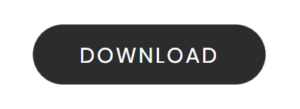Home / About STRIPES / Proposal Description
Proposal Description
In 2018, Jan van der Veen (Faculty of Behavioural, Management and Social Sciences, ELAN Department of Teacher Development) along with Miles Macleod (Faculty of Behavioural, Management and Social Sciences, Department of Philosohy) applied for the Comenuis Leadership Fellow grant. The project was granted and proposed to run from 1 May 2019 until 1 September 2022, however, due to to Covid 19, three months were added to the timeline.
Summary
STRIPES 2021 : STRucturing Interdisciplinary Projects for Engineering Students Engineering students are prepared for careers in which interdisciplinary (ID) approaches are needed in order to find solutions for complex societal problems. New exciting interdisciplinary research fields are found at the intersections of traditional disciplines. Also in engineering education new ID study programs emerge such as Technical Medicine, Biotechnology, Advanced Technology and Creative Technology. Traditional programs incorporate interdisciplinary components as well, following the T-shaped professional paradigm aiming for deep expertise first, followed by broad experiences. Project based learning enables the implementation of interdisciplinary learning as many of the problems given to the student teams can only be solved using multiple disciplines. Project based learning also incorporates skills development such as teamwork, user requirement analysis, sustainability and safety methods as well as reflective skills. For many teacher teams designing this type of education is challenging. They have to work with colleagues from both nearby and far-off fields of expertise. Balancing content focus and project work, full integration versus component based solutions, sustainable involvement of external experts, as well as suitable assessment formats are among the challenges these teacher teams face. STRIPES 2021 will support teacher teams in redesigning their ID modules in a structured and evidence informed way with students involved via participatory design. Evidence of improvement will be collected through design based research methods. Dissemination will be supported via the collection of best practises, ID concepts and methods, case study results and handbook which together will constitute an open source ID toolkit.
Research Questions
The main research question that comes with the STRIPES project is:
How can interdisciplinary(ID) engineering education be set up in a structured way?
To answer the main question, a set of research questions is formulated. In the first cycle (wp2) these questions will be studied. Their answers will add to the first version of the ID toolkit that is supposed to support the design phase of design teams and their educational advisors. The second cycle (wp3) will give more detailed answers in particular with respect to the structured approach applied and the usability of the ID toolkit.
RQ1
What learning goals are driving interdisciplinary engineering education?
What are the different visions and curriculum goals motivating interdisciplinary education. How and to what exstent are these translated into specific learning goals by teacher teams.
Which institutional, cognitive and practical constraints inhibit current ID teacher teams from meeting ID goals?
RQ2
Before designing solutions information is gathered to understand the constraints that teacher teams have had to deal with in prior versions of the modules.
RQ2
Which institutional, cognitive and practical constraints inhibit current ID teacher teams from meeting ID goals?
Before designing solutions information is gathered to understand the constraints that teacher teams have had to deal with in prior versions of the modules.
RQ3
Which methods can support interdisciplinarity within engineering projects?
What current educational methods, scaffolding support and project formulations are applied in current courses to facilitate ID; which strategies could improve this.
What ID assessment methods can be applied in ID engineering education?
RQ4
RQ4
What ID assessment methods can be applied in ID engineering education?
How well are current assessment strategies aligned with different ID learning goals; which strategies support assessment of different ID learning goals best.
How well are current assessment strategies aligned with different ID learning goals; which strategies support assessment of different ID learning goals best.
RQ5
To what extent does the ID toolkit support design teams when (re)designing their module?
Which aspects of the ID toolkit content works well and which not. Which elements should be provided in addition?
How do students perform the planned ID learning activities?
RQ6
RQ6
How do students perform the planned ID learning activities?
Monitoring the ID learning activities will help understand if students work on these tasks as expected, and if not why.
Monitoring the ID learning activities will help understand if students work on these tasks as expected, and if not why.
RQ7
To what extent do students reach the ID learning goals?
What aspects of products, reports and assessments show that ID goals are reached. Several methods will be used for each of the questions thus implementing data triangulation which can strengthen conclusions if outcomes of the methods support each other (Yin, 2014; McKenney & Reeves, 2018), see table below. As a by-product we expect to learn from how teaching staff involved in the STRIPES2021 project gain insights via this team-based co-creation process (Clarke & Hollingsworth, 2002; Gast, Schildkamp & van der Veen, 2017).
